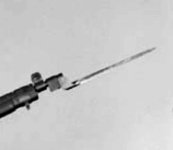Eaglelord17
CGN Ultra frequent flyer
- Location
- Sault Ste. Marie
Changing out a perfectly functioning part which was part of service for a alternate part just because of a few markings isn’t maintaining the history of the rifle.There is a massive difference between doweling an ishy screw (a dumb idea) and changing out say, an EFD marked part on a BSA SMLE. Not the same thing at all.
A properly fitted correct part is fine, doesn’t destroy any history, and isn’t humpimg a rifle in most people’s opinions.
What is humping a rifle is to re-mark parts to have rare markings, re-numbering a part with serial fonts intended to deceive a buyer, etc.
In my opinion there is a level of duty to maintain the history as a collector, not to fabricate it. Changing out parts to make it ‘more correct’ is fabricating it.
There is a reason all matching factory correct is worth so much, and that is because it is rare. Most people just know the buzzwords behind it (I love seeing ‘mostly matching’ in ads, basically saying mismatched in a less obvious way), without understanding the actual meaning behind it.







































































